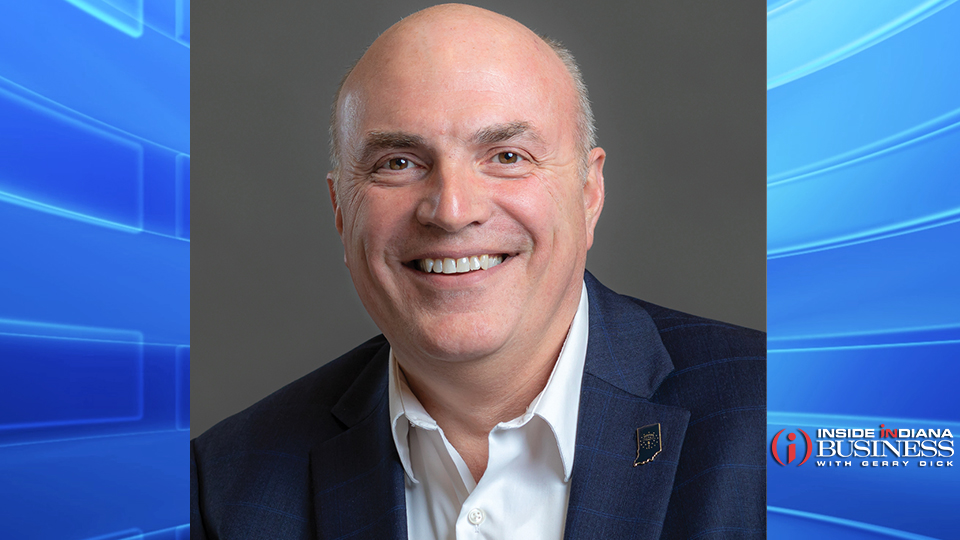Chair: Grow Allen could be ‘game changer’ for northeast Indiana
Subscriber Benefit
As a subscriber you can listen to articles at work, in the car, or while you work out. Subscribe Now
The board chair for Grow Allen says the newly established organization will focus on addressing one of northeast Indiana’s biggest challenges: the number of adults with marketable credentials or two- or four-year degrees.
Grow Allen officially kicked off Tuesday with the goal of enhancing career path development for students entering the workforce, starting as early as pre-kindergarten.
Ron Turpin says a 2022 strategic plan for northeast Indiana found only 43% of adults in the region have a credential or degree, which negatively affects the ability to address to other key challenges: population growth and wage growth.
In an interview with Inside INdiana Business, Turpin said in order to address the issue, the first thing the region needs to do is “grow our own.”
“Before we can attract others here, we need to grow and keep what we’ve got,” he said. “So a number of us from the business community sat down to the four public school superintendents that we have in Allen County and asked the question, ‘What would it look like?’ And so really, Grow Allen came out of those conversations as a convening organization. It’s not the one doing the actual education, but it’s bringing all the partners together to really answer that big question of, “How do we…be the leader in Indiana in degree credential attainment?'”
The four pillars of Grow Allen
Grow Allen is breaking its goals down to four key pillars. The first focuses on early learning but starts well before a child gets to school.
Turpin said the organization wants to make sure that mothers have access to quality prenatal care so they give birth to healthy babies.
“We know that if children are born unhealthy, they’re going to be further behind, really, for a number of years,” he said. “And then how do we come along with early learning to make sure that children come into kindergarten ready to learn?”
The second pillar focuses on life skills and ensuring that students receive a continuum of education throughout K-12 on things like how to apply for a job, how to use social media responsibly, personal finance and civic engagement before they graduate.
The third pillar is work-based learning, which Turpin said needs to be implemented well before high school when many kids, he said, have opted out and become less interested in school.
“We want to go back to the beginning. What are we doing at first grade, second grade, third grade, sixth grade, 10th grade, to really capture the imagination of these young people [and] show them all the career options that are available, have them really explore what that looks like? And then really, as they progress through the education process, they’re narrowing the field down.”
He said that would prepare students for success in college or for apprenticeships that could lead to industry credentials.
The fourth pillar is advocacy: focusing on legislative and statutory efforts to “give the freedom and flexibility for our education institution and partners, to be able to work together to achieve these outcomes.”
Turpin explains the four pillars for Grow Allen.
Achieving success
With such lofty goals ahead of it, Turpin said Grow Allen’s success will be rooted in the staff that it brings on board. The organization plans to hire an executive director, as well as individual directors for each of the four pillars.
“It’s really going to be each of these pillars that are going to become comprised of dozens and hundreds of people that are in the trenches doing this work that are talking about what the continuum looks like, who’s doing the work in that continuum, and where the holes are at,” he said.
Turpin noted that Grow Allen’s efforts will be a multi-year process, though there isn’t yet a specific target for reaching a higher percentage of adults with degrees or credentials. However, he said it’s worth doing.
“As we make these investments—and I don’t think it’s going to be a massive dollar investment—it’s really about mapping the assets that we have and making sure they’re redeployed more effectively. And then for those holes that we have, how do we plug those as a community to address that?”
But Turpin believes Grow Allen could serve as a model for other counties throughout the state.
Grow Allen is starting with a focus on the county’s four public school systems that serve some 55,000 kids. But Turpin said they want to bring in private schools and other educational options in to serve as many students as possible.
“I am optimistic that as we really roll this out, we start building these pillars, we’re gonna have a lot of people that come on board because they see what this can be and what this can achieve,” he said. “And it can really be a game changer for us as a community.”
